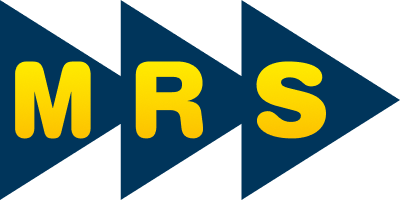Sumário

Annual Report
2022 Sustainability
2022 Sustainability
- PT
- EN
MRS rail safety ratings are in line with major North American first-class railroads (CSX Transportation, BNSF Railway and Norfolk Southern Railway), highlighting the reliability of its operation and the strong commitment to ensuring the integrity of the transported cargo. The Company is proud that over the last 13 years it has achieved, as a result of its efforts, a 43% decrease in the rate of occurrences per billion TKB (gross ton x kilometer). This number includes accidents with direct participation of MRS (related to failures in the operation and maintenance), in addition to accidents involving other railways and communities (run over and collision).
In 2022, the rate closed at 1.59, one of the best results in the Company’s history, with a 10% drop compared to the previous year, at 1.76. The main challenging factor for continued rate decrease is related to accidents caused by the community along the railroad network. Historically, MRS has shown constant attention to the well-being of communities, especially those close to the railroad right of way area and, in 2022, invested a total of R$ 10 million in servicing 579 assets, sealing the right of way area and revitalizing of six pedestrian crossings and two level crossings, in addition to implementing educational campaigns and overt surveillance task forces.

Rate of occurrences
(43% decrease over the last 13 years)
Number of accidents
(per million TKM)
Permanent way inspection processes
| Parameters | Equipment | 2020 | 2021 | 2021 |
|---|---|---|---|---|
| Gauge and geometry | TEV | 4,767 | 3,536 | 1,546 |
| Gauge and geometry (100prox..) | AT|GMS | - | - | 10000 |
| Surface defects and rail profile | RIV | 5,905 | 4,578 | 4,153 |
| Ultrasound | US | 5,361 | 5,472 | 4,497 |
Note: TEV: the equipment had a critical failure in a non-stock component (generator) that required waiting 8 months for the replacement of the item. During the downtime, inspections were carried out using the ATGMS equipment.
ATGMS: the vehicle started its assisted operation in March 2022 and in August 2022 it started sending valid information for defect correction and maintenance scheduling.
RIV: low performance in 2022 due to breakdowns of the vehicle that accompanies the inspection of the RIV.
US: with a focus on process reliability, one of the vehicles was replaced, which generated a 12-week shutdown to change the system from one vehicle to another. In addition, 18 weeks of corrective shutdowns were carried out, totaling 30 weeks of, at least one of the equipment, undergoing maintenance or modernization.
The actions include recreational initiatives in the main cities where accidents occur (such as the display of cars involved in collisions); a communication campaign throughout the year, with insertions on the radio, social media (Facebook and Instagram), regional newspapers and TV, among others; and increase in local surveillance and awareness actions during festive periods (such as in Aparecida do Norte in October, due to the patron saint’s day; and in Rio de Janeiro in the summer, in cities where the community crosses the train tracks to go to the beach).
Aiming to contribute to the prevention of railway occurrences and ensure the physical integrity of employees, the Company also maintains several programs and tools, including the Terminal Safety Program (PST – acronym in Portuguese), focused on inspect the physical and permanent ways conditions at the terminals of customers; the Network Safety Program, with particular attention focused on the reliability of railway maneuvering yards; and the Risk Lighthouse, which aims to measure, through indicators, adherence to safety programs and the risk index of operational areas, so that they can act preventively and guide their teams towards safe conduct.
In 2022, MRS implemented, in evolution to the former “Task Observation”, the Prever, a program aimed at auditing critical items in the maintenance and operation processes, allowing the achievement of significant improvements. In addition, the Company also performs periodic physical and behavioral inspections and maintains a Risk and Loss Reporting system (CRP – acronym in Portuguese), which was reformulated last year. In compliance with the safety protocols for using the equipment, the new system aims to record deviations through smartphone, with no need to travel to the workplace. The improvement provides agility and convenience to the process.
In 2022, the company conducted tests with fatigue and drowsiness devices through cameras on railway trains, locomotives, and road vehicles used for commuting by employees. The technology is expected to be implemented during 2023. With the same concern, MRS will also bring another innovation this year and implement the use of tests with about 60 seconds, at the beginning of the shift, through which it is possible to identify whether or not the employee is ready to start the workday. In parallel, the Company continues studies for the use of video analytics for the identification of cargo anomalies in trains already in transit, ensuring more safety and reliability for customers, and the use of artificial intelligence to detect vulnerable situations along the stretch, mainly with a focus on the community.
Over the last year, MRS was involved in 104 railway accidents, 63 of which were run over and 41 were collisions. Of the total, 101 events involving the community, 1 with another railroad and 2 with a technical cause (MRS cause). All were communicated to the relevant entity, ANTT.
For the next years, MRS continues committed to ensuring the high level of safety in the railway network, in relation to accidents with technical causes, and to improve the percentage of occurrences involving third parties. The concession renewal (learn more here) brings numerous challenges for the Company in this area, mainly due to the significant increase in the volume of works, with new partner companies, new employees and third parties. On the other hand, all investments will also directly contribute to the safety of the operation, employees and communities when completed.
Evolution of the accident rate
(number of accidents)